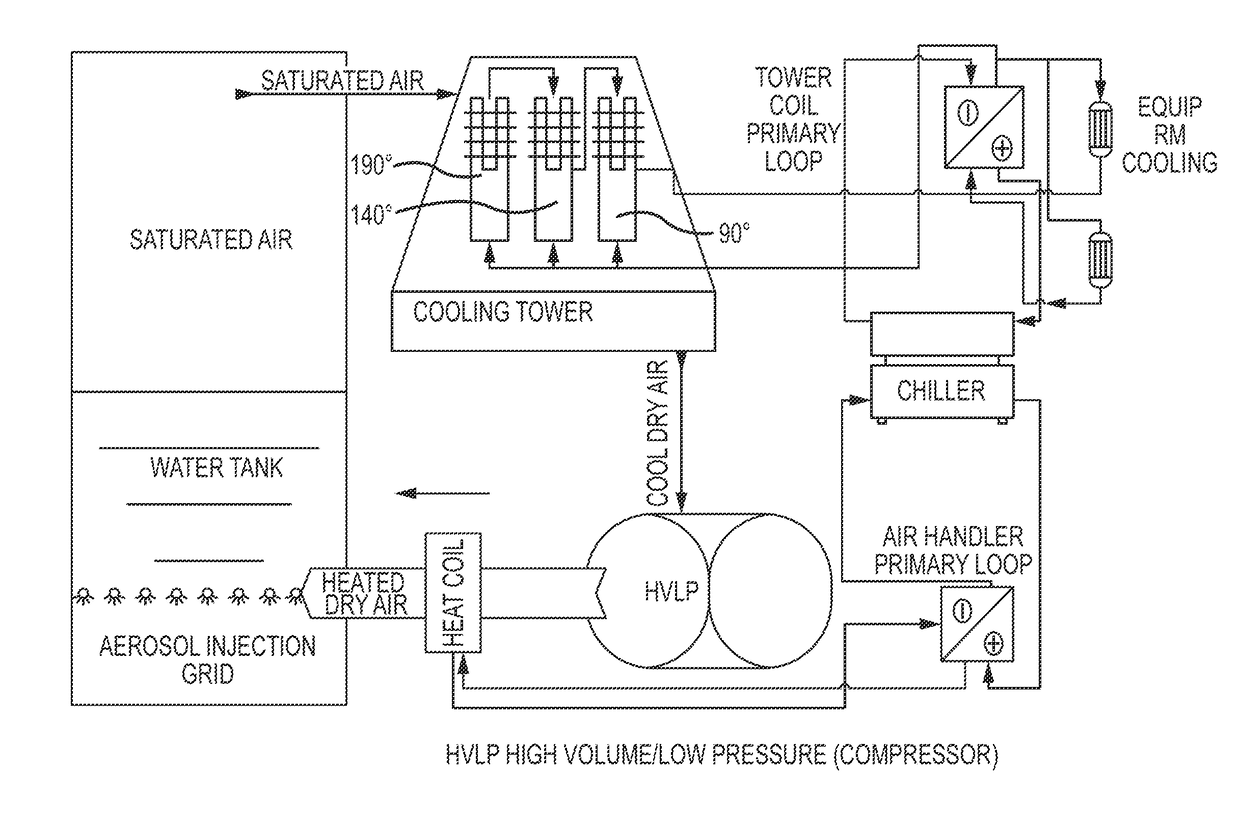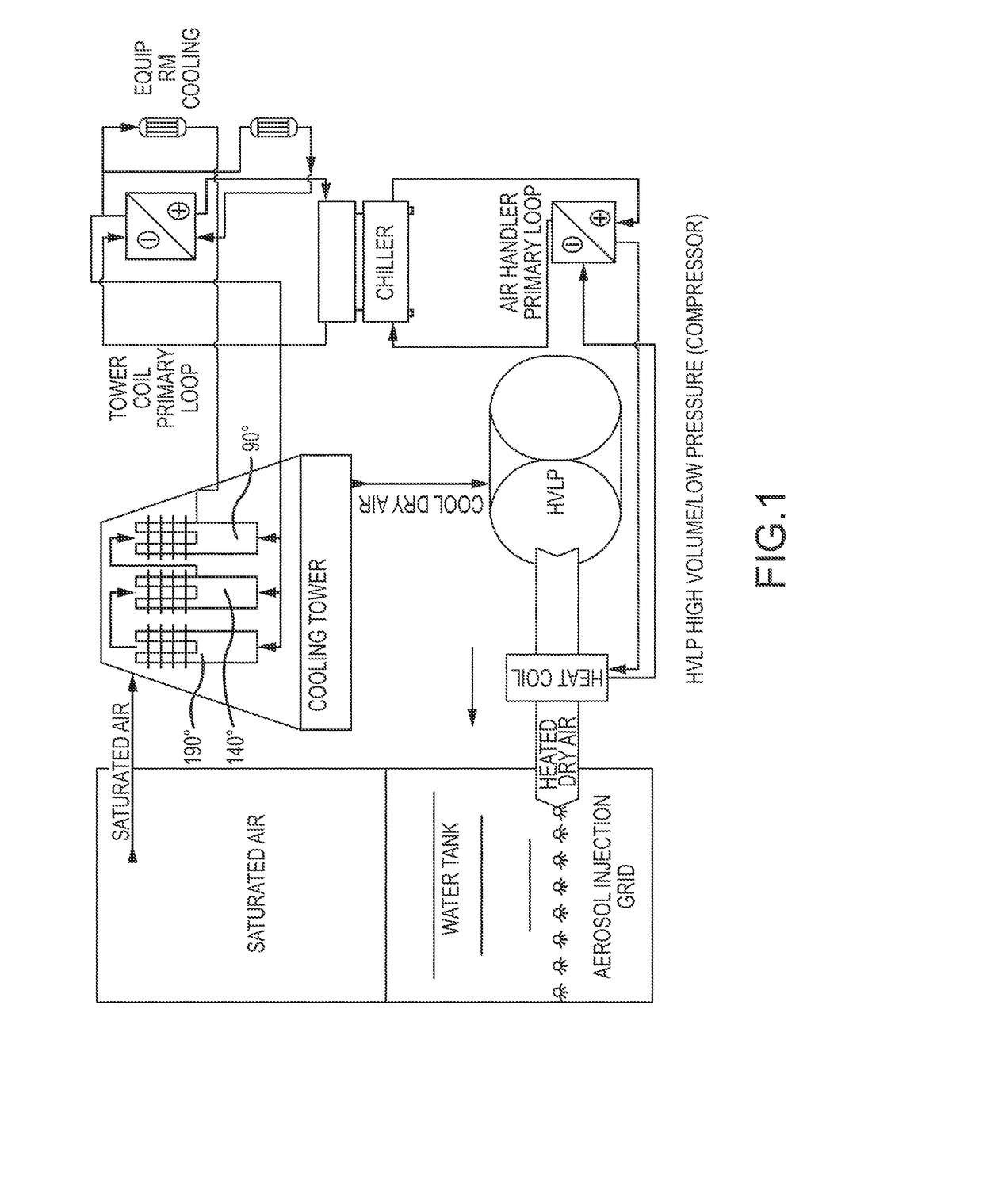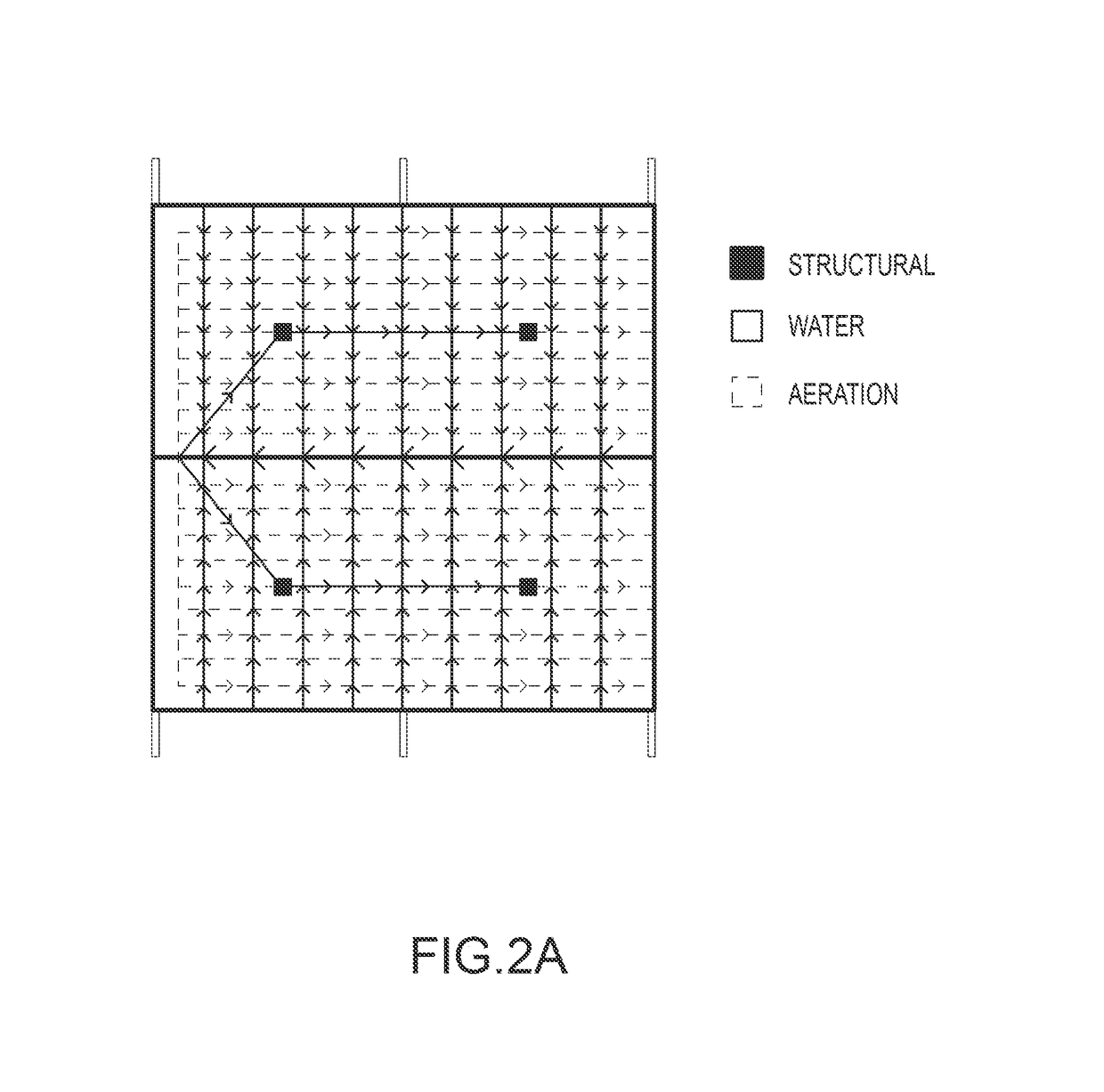Systems and methods for distillation of water from seawater, brackish water, waste waters, and effluent waters
a technology of waste water and effluent water, which is applied in the field of water purification, can solve the problems of brine being toxic to the marine environment in the surrounding area, affecting the quality of water supply, and increasing the cost of methods, so as to minimize heat loss and minimize heat loss
- Summary
- Abstract
- Description
- Claims
- Application Information
AI Technical Summary
Benefits of technology
Problems solved by technology
Method used
Image
Examples
Embodiment Construction
[0006]It is one aspect of embodiments of the present invention to provide a system for purifying water, comprising a solar energy collection device, collecting solar energy and heating a heat transfer fluid in a heat exchanger, the heat exchanger receiving and heating non-potable water; a super-insulated structure; a distilled water reservoir; and a concentrated effluent reservoir. The super-insulated structure comprises a distillation tower, receiving the heated non-potable water; a high-volume low-pressure (HVLP) blower, compressing intake air to form compressed air having a temperature of between about 208° F. and about 210° F., and injecting the compressed air into the distillation tower to form saturated air and a concentrated effluent in the distillation tower, wherein the compressed air enters the distillation tower via a plurality of microbubble nozzles located at a vertical midpoint of a water column comprising the heated non-potable water and the concentrated effluent; a c...
PUM
| Property | Measurement | Unit |
|---|---|---|
| temperature | aaaaa | aaaaa |
| temperature | aaaaa | aaaaa |
| boiling point | aaaaa | aaaaa |
Abstract
Description
Claims
Application Information
 Login to View More
Login to View More - R&D
- Intellectual Property
- Life Sciences
- Materials
- Tech Scout
- Unparalleled Data Quality
- Higher Quality Content
- 60% Fewer Hallucinations
Browse by: Latest US Patents, China's latest patents, Technical Efficacy Thesaurus, Application Domain, Technology Topic, Popular Technical Reports.
© 2025 PatSnap. All rights reserved.Legal|Privacy policy|Modern Slavery Act Transparency Statement|Sitemap|About US| Contact US: help@patsnap.com



